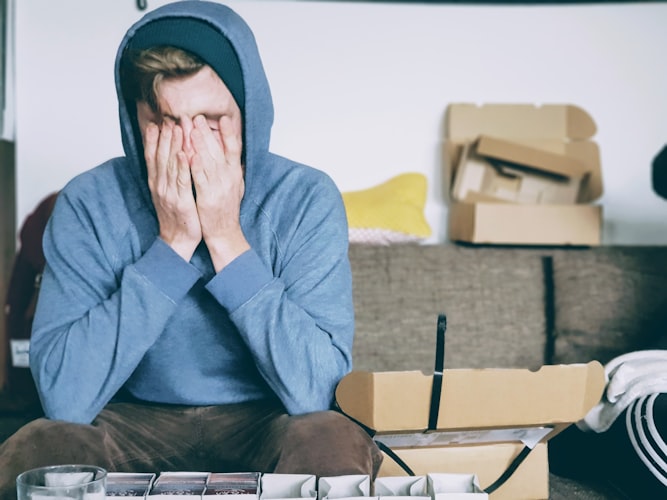While it is believed that millions of Americans suffer from obstructive sleep apnea, another unfortunate element of this condition is that many people have not been diagnosed.
For some, this is because they may not be aware of the symptoms of sleep apnea. As a result, they may attribute their fatigue to other causes. It can also be especially difficult to notice common sleep apnea symptoms if you don’t share a bed with a partner who notices these disturbances to your sleep during the night.
However, another issue hindering diagnoses is the cost and inconvenience of a traditional sleep study. The good news is that you no longer have to spend the night at a sleep lab to get a sleep apnea diagnosis. Improving technology has made it so you can get this important diagnosis from the comfort of your own home.
How Does a Home Sleep Study Work?

This testing is non-intrusive and quite easy to manage. As Corliss writes, “You’ll get a small, lightweight monitor, a belt you slip around your midsection, a small finger clip that monitors your oxygen, and an airflow sensor to place under your nose. These sensors and devices measure your oxygen saturation, heart rate, and airflow, as well as the movements of your chest and abdomen and your position while you sleep.”
Based on these results, sleep specialists will be able to determine whether you have sleep apnea, as well as the severity of your symptoms (typically measured by how many breathing interruptions you experience per hour).
While you may need to wait for the monitoring equipment to arrive from a sleep lab before you can do the test, once you have the monitor, you can do the test on a night that is most convenient for you — and in the comfort of your own bed. Best of all, at-home testing can be performed at a fraction of the cost of an overnight stay in a sleep lab, helping you save several hundred dollars.
Signs You Should Schedule a Sleep Study

First, consider your risk factors. Men, individuals over the age of 40, and those who are overweight or obese are generally more likely to experience sleep apnea. Individuals with a family history of obstructive sleep apnea, as well as men with neck circumference over 17 inches and women with a neck circumference over 16 inches are also at a higher risk. Individuals with high blood pressure also tend to be at a higher risk for sleep apnea — and their condition could be related to sleep apnea in the first place.
Your sleep habits can also tell you if you should get tested. If your bed partner has observed that you snore, or that you occasionally stop breathing and then wake up gasping for breath during the night, you likely have sleep apnea. Even if you haven’t observed this, pay attention to your energy levels. If you are consistently fatigued during the day, sleep apnea could be to blame.
Next Steps
 After completing your at-home sleep study, the results will be analyzed by specialists at the sleep lab. If the results indicate that you have sleep apnea, they will generally write a prescription for a CPAP machine, with instructions regarding the air pressure settings that should be used.
After completing your at-home sleep study, the results will be analyzed by specialists at the sleep lab. If the results indicate that you have sleep apnea, they will generally write a prescription for a CPAP machine, with instructions regarding the air pressure settings that should be used.
With this prescription in hand, it’s now up to you to obtain a quality CPAP machine and mask. Adapting to a CPAP machine can take some time, so try to find an option that will be the most comfortable for you.
For the CPAP machine itself, look for devices that include features like pressure relief during exhalation, which makes it easier to breathe out, and ramping, which gradually increases air pressure until you fall asleep.
Proper mask fit can make all the difference for your comfort and the effectiveness of your treatment. You may wish to test a few different mask options before settling on a favorite. If you breath through your mouth at night, you should use a full face mask. Other users prefer nasal masks because they are less likely to induce feelings of claustrophobia. A sleep specialist can help you with sizing and achieving a snug, yet comfortable fit.
Counteracting Sleep Apnea
Left unchecked, sleep apnea can contribute to a wide range of serious health issues, including high blood pressure and type 2 diabetes. On a day to day basis, extreme fatigue can negatively affect your mood and decision-making abilities. Getting a CPAP machine will go a long way in helping you enjoy quality sleep once more.
Of course, just like with a sleep study, the cost of CPAP equipment can be a barrier for some, especially those who don’t have insurance. This is where Help Medical Supplies comes in. We offer discounted pricing on leading brands like ResMed and Philips Respironics, as well as money-saving bundles that have everything you need to start sleep apnea therapy.
Combine these great offers with free shipping on orders over $89 and available financing, and affordable sleep apnea treatment isn’t as far off as you might expect!

